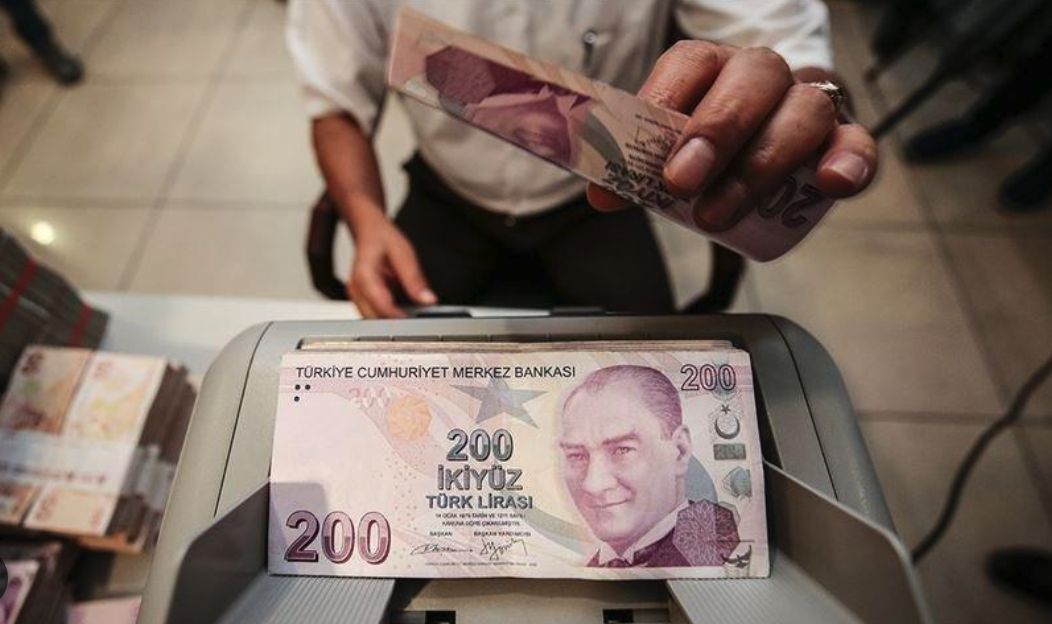Turkey’s central bank has finally ended its era of easy monetary policy, which had reflected President Recep Tayyip Erdoğan’s unorthodox theory that lower interest rates will reduce inflation. But policymakers still need to convince markets that Erdoğan’s New Economy Program will never be resurrected. By Sevda Demiralp in Project Sydicat on June 30, 2023.
Despite facing his greatest electoral challenge in more than two decades in power, Turkish President Recep Tayyip Erdoğan won another five-year term in a run-off vote in May, while his Justice and Development Party (AKP) and its allies maintained their parliamentary majority. The contest was closely watched in part because the outcome would shape the direction of the country’s troubled economy.
When Erdoğan, who campaigned on a promise to maintain low interest rates, reappointed Mehmet Şimşek, a widely respected champion of economic orthodoxy, as minister of treasury and finance, it signaled a shift from his unstainable growth-oriented policies. The question is whether this apparent return to “rational ground,” as Şimşek put it, is here to stay.
The deterioration of Turkey’s economic environment began in 2018, triggered by a currency crisis that made it more expensive for Turkish companies – many of which had grown dependent on foreign lending – to repay their dollar-denominated debt. The crisis deepened in September 2021, when the government implemented the unorthodox New Economy Program (NEP). Reflecting Erdoğan’s economic mantra that high interest rates cause high inflation, the plan called for aggressive rate cuts to trigger a depreciation of the Turkish lira, which would, in turn, increase exports. An export boom would then strengthen the lira, in turn reducing inflationary pressures and replenishing the central bank’s foreign reserves.
None of these goals have been met. The nominal exchange rate never appreciated, even with huge interventions by the central bank. Instead, the dollar exchange rate slid from ₺8.5 in September 2021 to ₺26 as of this writing. Inflation soared, reaching a peak of 85.5% in November 2022, and, last month, the central bank’s net foreign reserves turned negative for the first time since 2002.
The government refused to abandon its unconventional approach, even though the NEP failed to achieve its aims. Instead, the central bank – strong-armed by Erdoğan – and the Banking Regulation and Supervision Agency (BRSA) implemented more than 250 rules and regulations to prop up the low-interest-rate policy long after it had reached its limits.
Showing no intention of changing course during the campaign (even going so far as to construe the AKP’s success in the parliamentary elections as an endorsement of his approach, Erdoğan now confronts an economy on the brink of crisis. His appointment of Şimşek, viewed favorably by international investors for respecting central-bank independence and advocating fiscal discipline, indicates a new willingness to ease his grip on monetary policy.
Whether Şimşek can execute a major U-turn depends on his ability to convince investors that the NEP is dead and buried, never to be resurrected. This will be a challenging task, given that a similar return to orthodox policies in late 2020 lasted less than five months. Just because Erdoğan currently supports a more conventional approach does not mean he will fully abandon his views on interest rates.
It is promising that Hafize Gaye Erkan, previously managing director at Goldman Sachs and former president of First Republic Bank, has replaced Şahap Kavcıoğlu, who, as central bank governor, oversaw a series of sharp rate cuts at Erdoğan’s behest. Despite her lack of experience in central banking, Erkan’s professional background suggests that she will pursue orthodox monetary policy.
In fact, the central bank, under Erkan’s leadership, raised interest rates by 6.5 percentage points on June 22. But given that inflation in Turkey is nearly 40%, a rate hike of this size looks more like a detour to prevent an imminent balance-of-payments crisis, rather than a U-turn. A frontloaded interest-rate increase, coupled with a candid and thorough evaluation of the NEP by Şimşek, would have convinced the markets of a long-term transition to orthodox policies. Lacking that, it is difficult to have confidence in the country’s commitment to monetary tightening.
Equally worrisome is the appointment of Kavcıoğlu to the BRSA, where he will likely act as a counterbalance to the contractionary impact of increasing borrowing costs. Erdoğan’s speech on June 14, in which he approved of Şimşek’s policies but reiterated his belief in lowering interest rates to reduce inflation, supports this hunch.
So far, there has been no discussion about how the costs of a tightening cycle – no matter how small or temporary – will be distributed (the AKP’s election manifesto did not anticipate this “bitter medicine”). If low-income households, which already suffer the most from inflation, bear the brunt of these efforts, the social backlash could pressure the central bank to ease prematurely.
A tightening cycle will also impose costs on the banking system beyond the usual duration risk. In an effort to keep lending rates low, policymakers asked Turkish banks to hold fixed-rate government bonds as part of their required reserves during the NEP. Rate hikes imply a capital loss on these bonds unless the banks hold them until maturity. While the overall size of fixed-rate bonds is about 10% of bank balance sheets and is not expected to cause systemic risk, the government should still consider swapping these bonds to limit capital loss.
Before Şimşek and Erkan can turn around the economy, the Turkish government must reckon with its own disastrous policies to gain credibility. Otherwise, any tightening will fail to attract foreign capital or bring runaway inflation under control.
Selva Demiralp, Professor of Economics and Chair of Yapi Kredi Economic Research at Koç University, is Director of the Koç University-TUSIAD economic research forum.

